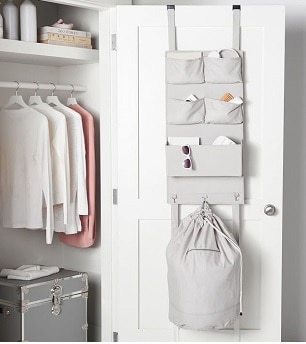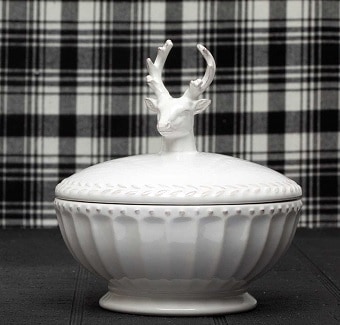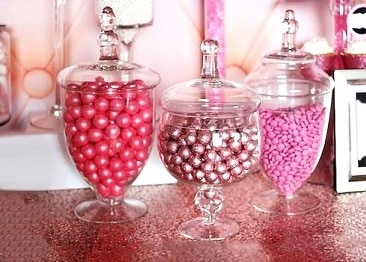#1 – Keep your household inventories to a minimum.
The biggest key to successful home organization is downsizing household inventories. Whenever you organize anything, it’s essential to keep only the things that you need, use, love, or would buy again tomorrow. Evaluate your belongings with this concept in mind since it’s so easy to find reasons to keep things. Often, the excuses we conjure up for holding onto our belongings can wrestle with logic. This creates the common indecision we feel that tends to stifle the organizational process. Organizing is not about only effectively arranging your belongings; it’s equally important to get rid of items that no longer serve a purpose. Carving out time to organize is challenging. Therefore, it’s imperative to make good use of your time and declutter with a purpose. Once useless items are out of the way, the home is in the perfect condition to reorganize. Decluttering leads to manageable inventories, which has many advantages. First, fewer storage essentials are needed, which saves both money and space. Also, there’s no wasting time making storage arrangements for unnecessary belongings. When you have fewer things, finding what you need usually takes less time.
#2 – Stick to one organizational project at a time.
Some people start organizing space in one room, and before completing that task, something causes them to get sidetracked with a project in another room. This tends to happen when we shift household inventories from room to room. This is never a good idea because it usually creates a fragmented, overwhelming state by being off task. It’s best to keep organizational tasks small and limited until they’re finished. Then you can more easily move on to the next task.
#3- Don’t keep unwanted items just because they might have value.
Commonly, people keep unnecessary things because they believe the items hold a significant monetary value. Something kept, for this reason, should be evaluated for its actual value, which involves a little work. Remember that almost all used items are worth one-half to one-third of their original cost, even when they’re in perfect condition, simply because they’re not new. Luxury items can be appraised by a certified professional. Most other belongings can be compared with identical items that are being resold. Resale websites and stores are the best way to determine the monetary value of your used items. In general, the older the item, the less it’s worth. Technological devices are a good example of how age can dramatically reduce value. Bear in mind that, in most cases, it’s best to sell your things while they’re somewhat current because most items depreciate rapidly. This knowledge should assist you in the decluttering process.

#4- Use over-the-door storage devices sparingly.
Many over-the-door storage items are difficult to secure, so they clank against the door while it’s in motion. Such movement also creates scratches on the door. Heavy belongings bound to these organizers increase the volume of the clanking noise and, in some cases, may weaken your door hinges. Articles carelessly placed in over-the-door storage devices run a great chance of falling out simply due to the movement of the door. Over-the-door storage devices located in highly visible home locations tend to be aesthetically unappealing, so place them on the interior side of the door.

# 5- Use professional labels or tags.
Invest in a professional label maker to keep your containers uniform and neat. These labels are easy to remove, so the labeled containers are easy to reuse. Select a high-performance electronic labeling system marketed for commercial use. Many adhesive labels have a tendency to peel off, so choose a labeling system that accepts durable, extra-strength tape cartridges. Printing tape designed with a back slit for easy peeling is also helpful
# 6 – Keep your unused storage containers for future use.
Storage containers that are no longer used should be stored outside your daily living space. Goods choices would be places like an attic, basement, or extra closet. Always exhaust this collection of storage items first before purchasing new ones.

# 7 – Many household items make great organizers
Many household items and furniture can function as great substitutes for storage essentials. Cookie jars, lidded bowls, armoires, chests, urns, vases, canisters, flower pots, ashtrays, and the like have storage potential. Many such items can be stored out in the open for convenient access while being decorative.
# 8 – Be certain you’ll use whatever you store
Many people store items because they think one day they’ll be useful. However, before doing so, it’s important to visualize the item in use or be able to account for a time when the item will be used—for example, an upcoming vacation or holiday. Make certain that other members of the household are aware of items that are packed away. This way, you can receive feedback about the items and determine if they’ll get used. A good way to spread the word to other family members is to place a note on a memo board or connect via digital communication.
# 9 – Items are replaceable
While decluttering your household inventories, keep in mind that you are dealing with material possessions that are replaceable. When something is not enjoyed or needed, let it go, bearing in mind that it’s tangible and not meant to be kept for eternity. Chances are such items will never be missed. Usually, the worst thing that could happen in mistakenly letting go of something is that it needs to be replaced, which is not the end of the world. The replacement usually works out better and receives more use than the one let go. Remember that the space your items occupy is valuable real estate that you may still be paying off and are certainly paying taxes on. This makes it all the more important to use your home space efficiently and wisely.

#10 – Make your organizers visually simple
Storage organizers are more likely to be reused when they’re plain and consistent. It’s best to go with neutral colors, such as black, white, or beige since they match everything. It’s common to tire of patterned or bold-colored storage organizers that were bought to match a certain room. Once the room is redecorated, the organizers will look out of place and become harder to repurpose elsewhere. This is often seen with infant and children’s organizers in juvenile themes and colors like pastels or primary colors. There are ways to add uniqueness to neutral storage organizers that are not permanent. For example, you could add decorative pulls on storage drawers or use colorful or patterned drawer liners in baskets or on shelving. Removable animated-character stickers can be added to children’s plastic storage containers. Decorate wicker baskets with ribbon, dried flowers, or raffia. Glue ribbon, fabric, wood letters, and the like onto plastic containers.
